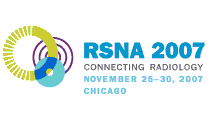
Abstract Archives of the RSNA, 2007
SSK01-07
False-Negative Rate of US-guided 14 Gauge Core Needle Breast Biopsy after Long-term Follow-up
Scientific Papers
Presented on November 28, 2007
Presented as part of SSK01: Breast Imaging (Interventional)
Ji Hyun Youk MD, Presenter: Nothing to Disclose
Eun-Kyung Kim, Abstract Co-Author: Nothing to Disclose
Min Jung Kim MD, Abstract Co-Author: Nothing to Disclose
Ki Keun Oh MD, Abstract Co-Author: Nothing to Disclose
To determine the rate and causes of false-negative results at US-guided 14-gauge core needle biopsy (USCNB)
In this retrospective study, a total of 2420 masses from 2198 women who had undergone USCNB from February 2000 through June 2005 and had at least a 2-year post-biopsy follow-up were included. The pathologic results of USCNB were reviewed and correlated with the surgical excision or long-term imaging follow-up. For the missed cancer, the reasons for excision, the time interval between USCNB and excision, and the characteristics of lesions were analyzed.
1256 (51.9%) yielded malignancies. Among 720 benign lesions excised after USCNB, 31 additional malignancies were diagnosed (false-negative rate, 2.4%). The most common reason for excision was imaging-histologic discordance, and the frequency of additional malignancy was significantly higher for cases excised due to a suspicious imaging finding than suspicious physical findings or patient’s request (19.1% vs. 0.9%; P<0.0005). For six lesions (19%) of 31 missed cancers, there was a delay in the diagnosis or decision to proceed with surgery by more than two months and the reason for excision was an increase in size. The false-negative rate according to the characteristics of the lesions did not demonstrate a statistically significant difference: palpable vs. nonpalpable (1.8% vs. 3.3%) and lesion size (≤5mm, 6.7%; 6-10mm, 3.8%; 11-15mm, 1.6%; 16mm≤, 2.3%). However, false-negative rate of DCIS was significantly higher than invasive cancer (P<0.0005).
USCNB is an accurate method for diagnosing breast masses. An imaging-pathologic correlation and a follow-up of benign lesions are essential.
This study emphasizes that unavoidable false-negative result do occur, so that imaging-pathologic correlation and post-biopsy follow-up protocols are important to avoid diagnostic delay.
Youk, J,
Kim, E,
Kim, M,
Oh, K,
False-Negative Rate of US-guided 14 Gauge Core Needle Breast Biopsy after Long-term Follow-up. Radiological Society of North America 2007 Scientific Assembly and Annual Meeting, November 25 - November 30, 2007 ,Chicago IL.
http://archive.rsna.org/2007/5013134.html

